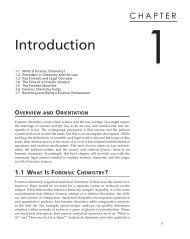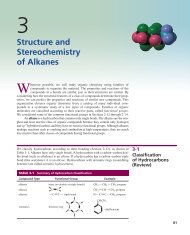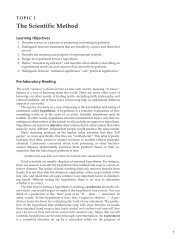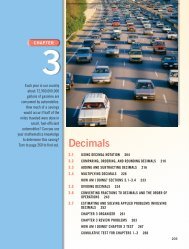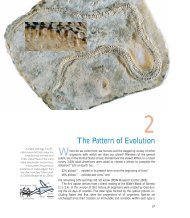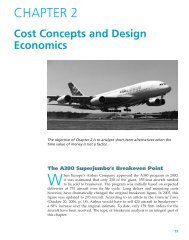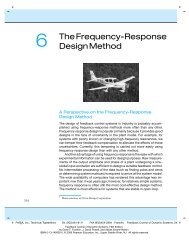CHAPTER 3 - Educators
CHAPTER 3 - Educators
CHAPTER 3 - Educators
Create successful ePaper yourself
Turn your PDF publications into a flip-book with our unique Google optimized e-Paper software.
104 <strong>CHAPTER</strong> 3/COST-ESTIMATION TECHNIQUES<br />
total direct labor requirements are reduced to 34.48 hours (instead of 36.48), the<br />
target cost could be realized. Now the challenge is to find a way, either through<br />
product or process redesign, to reduce the direct labor requirements.<br />
EXAMPLE 3-11 Cost Goal for Production Material at the Throttle Assembly Plant<br />
Given the current estimated total manufacturing cost of $26.21, as shown in<br />
Figure 3-8, determine a cost goal for production material that would allow us to<br />
achieve a target cost of $25.00.<br />
Solution<br />
With the spreadsheet in Figure 3-8 as a starting point, one approach to<br />
determining a cost goal for production material would be to iteratively change<br />
the value entered in Row G and Column D until the desired total manufacturing<br />
cost of $25.00 is obtained. The following table shows a series of costs for<br />
production material and the resulting total manufacturing cost per assembly:<br />
Production Material Total Manufacturing<br />
Cost per 50 Assemblies ($) Cost per Assembly ($)<br />
167.17 26.21<br />
150.00 25.84<br />
140.00 25.63<br />
130.00 25.42<br />
120.00 25.21<br />
110.00 25.00<br />
As seen in the table, a production material cost of $110 per batch of 50 assemblies<br />
would result in a total manufacturing cost of $25.00, the target cost. Now it is<br />
left to design engineers to determine if a different, less costly material could be<br />
used or if process improvements could be made to reduce material scrap. Other<br />
possibilities would be to negotiate a new purchase price with the supplier of the<br />
material or seek a new supplier.<br />
The chapter case study on the demanufacturing of computers illustrates the<br />
versatility of target costing concepts.<br />
3.5.3 Value Engineering<br />
This section introduces the topic of value engineering (VE). The objective of<br />
VE is very similar to that of design to cost. The VE objective is to provide<br />
the required product functions at a minimum cost. VE necessitates a detailed<br />
examination of a product’s functions, and the cost of each, in addition to a



